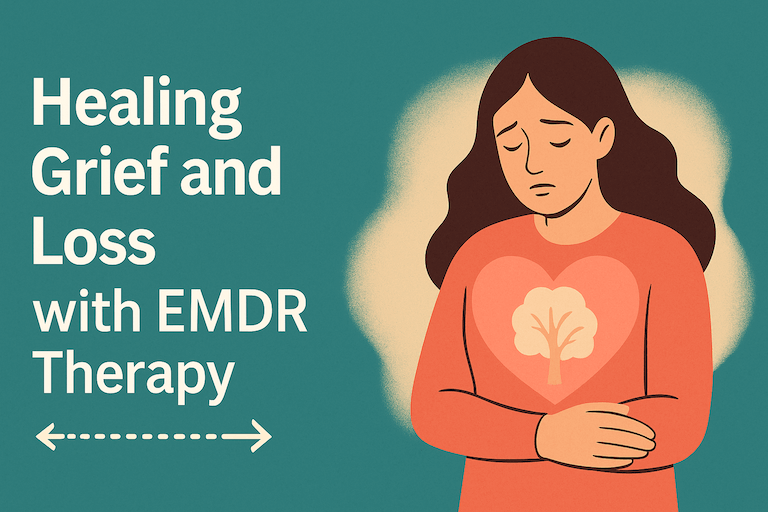How emdr therapy new york city treats mental health challenges with organized methods
Exactly How EMDR Therapy Works: a Thorough Take A Look At the Process and Its Performance
EMDR treatment has actually emerged as a noticeable treatment for trauma-related conditions. Its organized approach consists of different stages made to promote the processing of distressing memories. Central to this method is the idea of reciprocal excitement, which plays a vital duty in just how memories are refined. Recognizing these elements reveals much regarding the therapy's effectiveness. What especially occurs throughout an EMDR session, and exactly how does it affect the restorative journey?
Recognizing the Principles of EMDR Therapy
EMDR treatment, or Eye Activity Desensitization and Reprocessing, runs on the property that unsolved traumatic experiences can hinder emotional wellness. This innovative restorative technique intends to assist in the handling of traumatic memories, enabling individuals to acquire a much healthier viewpoint on their past. Central to EMDR is the concept of reciprocal excitement, commonly accomplished via directed eye activities, which is believed to aid integrate distressing memories right into a much more flexible framework.

The 8 Phases of EMDR Treatment
The procedure of EMDR treatment unfolds over 8 distinctive phases, each developed to guide clients via an organized technique to recovery injury. The initial stage involves history-taking, where the specialist evaluates the client's history and identifies target memories. In the second stage, clients find out relaxation techniques to take care of distress. The third phase concentrates on determining negative beliefs related to the stressful memory.
The 4th phase is where the desensitization procedure begins, enabling customers to process the traumatic memory. The 5th phase involves mounting positive beliefs to replace the negative ones. In the sixth stage, clients are led to assess their physical and psychological responses to the refined memory. The 7th phase stresses closure, assisting clients go back to a state of stability. Ultimately, the eighth stage involves reevaluation, where clients and specialists assess progress and resolve any recurring distress. This extensive method fosters a pathway to recovery and strength.
The Function of Reciprocal Stimulation
Reciprocal excitement is a necessary component of EMDR therapy, facilitating the handling of terrible memories. This method includes alternating stimulation of both hemispheres of the brain, typically achieved via eye movements, acoustic tones, or tactile sensations. The function of bilateral stimulation is to involve the mind's all-natural information handling system, which might become interfered with following trauma.
By turning on both sides of the mind, bilateral stimulation assists customers access and reprocess stressful memories in an extra adaptive means. This approach encourages the combination of stressful experiences, lowering their psychological cost and enabling clients to establish new point of views.

In addition, reciprocal excitement may promote relaxation and decrease anxiety throughout sessions, creating a safer environment for customers to face unpleasant memories. Eventually, this technique enhances the restorative process, enabling individuals to approach healing and resolution.
Evidence Sustaining the Efficiency of EMDR
Research has shown that EMDR treatment works in dealing with different psychological problems, especially trauma (PTSD) Various studies have actually demonstrated significant decreases in PTSD symptoms adhering to EMDR therapy. For circumstances, a meta-analysis of randomized controlled trials located that EMDR was as efficient as cognitive behavior the original source modification (CBT) for PTSD, with long lasting impacts observed even months after therapy. In addition, the American Psychological Organization and the World Health Company back EMDR as a recommended therapy for trauma-related conditions.
Past PTSD, research suggests that EMDR can likewise profit individuals experiencing anxiousness, anxiety, and fears. An expanding body of evidence sustains its usage in varied populations, consisting of children and professionals - emdr therapy new york. On the whole, the building up research study underscores EMDR's possible as a functional therapeutic choice, leading the way for additional expedition right into its devices and applications in psychological health therapy
What to Anticipate Throughout an EMDR Session
During an EMDR session, clients can expect an organized yet adaptable approach aimed at processing distressing memories. The specialist begins by establishing a safe environment, where customers can feel comfortable sharing their experiences. Initial discussions focus on determining certain memories and connected negative beliefs.
Clients are guided to concentrate on these memories while at the same time taking part in reciprocal excitement, commonly via guided eye movements or touching. This twin emphasis aims to promote the handling of the trauma, enabling customers to reframe their experiences and lower psychological distress.
Throughout the session, specialists check customers' feedbacks, changing the pace and approach as required. Procedure may include leisure strategies or cognitive restructuring to strengthen favorable ideas. On the whole, customers can expect a helpful ambience that encourages self-exploration and recovery, eventually bring about a higher sense of psychological health.
Frequently Asked Questions
Is EMDR Treatment Appropriate for Kid or Adolescents?
EMDR treatment can be appropriate for teens and youngsters, supplied it is adapted to their developing requirements (licensed emdr therapists nyc). Clinicians often change strategies to assure security and performance, supporting more youthful populaces in handling trauma and psychological distress
The Length Of Time Does EMDR Treatment Typically Last?
EMDR treatment usually lasts between 8 to 12 sessions, with each session varying from 60 to 90 minutes. Nonetheless, individual needs and the intricacy of trauma can influence the total duration of treatment.
Can EMDR Treatment Be Done From Another Location or Online?
EMDR treatment can without a doubt be carried out remotely or online. Numerous specialists have adjusted their approaches to digital environments, enabling clients to take part in efficient sessions from the convenience of their homes, preserving healing advantages.
What Are the Prospective Negative Effects of EMDR?
Potential side effects of EMDR therapy may consist of this website short-term psychological distress, enhanced anxiousness, dazzling memories, and physical discomfort. People may likewise experience tiredness or headaches complying with sessions, as the mind refines extreme sensations and memories.
Just How Does EMDR Compare to Conventional Talk Therapy?

EMDR therapy, or Eye Activity Desensitization and Reprocessing, runs on the facility that unresolved distressing experiences can prevent psychological well-being. The process of EMDR treatment unravels over eight distinctive phases, each made to lead customers through an organized approach to healing injury. Bilateral excitement is a special info crucial part of EMDR therapy, helping with the processing of distressing memories. During an EMDR session, customers can expect an organized yet flexible strategy intended at handling terrible memories. Possible side effects of EMDR treatment may include temporary psychological distress, increased anxiousness, vibrant memories, and physical pain.